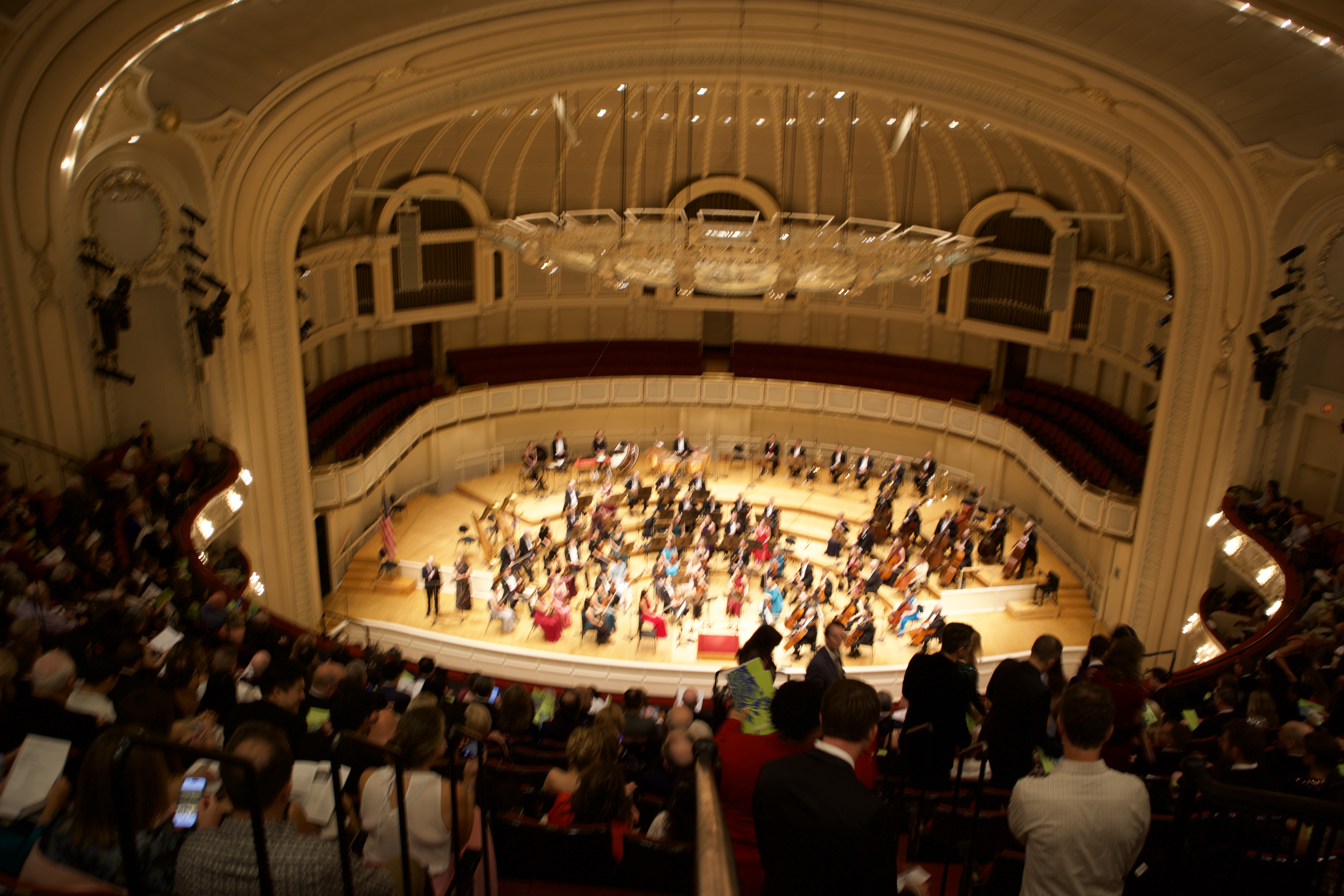The Chicago Symphony Orchestra’s celebratory fundraising concert took place on September 20, opening the 2025–26 season with a sense of homecoming. Symphony Center was filled to the brim, the audience bubbling with anticipation and festive spirits, rather like the champagne glasses at the pre-concert reception.

The program was elegant and lighthearted curated. We began with Weber’s Oberon Overture, followed by Mendelssohn’s A Midsummer Night’s Dream — the Scherzo and the famous Wedding March.
Mendelssohn’s Scherzo
The Scherzo is a notorious test piece for any orchestra. The woodwinds, in particular, must play with crystalline precision — every flute, oboe, and clarinet line crisp, buoyant, and in perfect rhythmic alignment. More than technical accuracy, the passage demands that musicians breathe and move together with a shared sense of spirit. Strings, meanwhile, must maintain an airy lightness, each note evenly spun.
On this evening, the CSO strings delivered beautifully. Their playing had the delicacy and buoyancy the music requires. The woodwinds, however, struggled to find cohesion. Their ensemble lacked the unanimity of breath and phrase that makes this passage sparkle. The woodwinds never quite managed to breathe as one, leaving the texture more scrambled than magical.
Happy Part: Mendelssohn’s Wedding March & Joyce DiDonato
The mood quickly lifted with the crowed pleaser Wedding March. I even heard the audience gasp and chuckle in delight as the opening chords resounded.
And Tten came the evening’s star: Joyce DiDonato. The beloved mezzo-soprano charmed immediately, singing Strauss and Bizet. Her rendition of the Habanera from Carmen ignited the audience with playful and sultry. The queen of tonight returned for an encore: Somewhere Over the Rainbow. “There’s no place like home”:
Wagner’s Tannhäuser Overture
The concert concluded with Wagner’s Tannhäuser Overture. My own reaction echoed that of 19th-century critics, whose barbs remain both sharp and amusing today. Let’s nevertheless conclude today with a bit of nonchalant Wagner spirit, for a few of the critic selection:
This concert ended with an overture (to the opera Tannhäuser) by R. Wagner, a German composer. His work seemed to us nothing but a very noisy accompaniment to an absent melody. After all, there is no law prohibiting to write when one has no ideas whatsoever. The work of Monsieur Wagner is therefore perfectly legal.
(National, Paris, November 30, 1850)
The Overture to Tannhäuser is one of the most curious pieces of patchwork ever passed off by self-delusion for a complete and significant creation. When it is stripped and sifted, Herr Wagner’s creation may be likened, not to any real figure, with its bone and muscle, but to a compound of one shapely feature with several tasteless fragments, smeared over with cement, but so flimsily that the paucity of good material is proved by the most superficial examination.
(H. F. Chorley, The Athenaeum, London, May 19, 1855)
The Overture to Tannhäuser does not improve on closer acquaintance. So much incessant noise, so uninterrupted and singular an exhibition of pure cacophony, was never heard before. And all this is intended to describe the delights and fascinations which lured the unwary to the secret abode of the Goddess of beauty… We sincerely hope that no execution, however superb, will ever make such senseless discord pass, in England, for a manifestation of art and genius.
(J. W. Davison, London Times, June 12, 1855)
The contrast between the Macfarren Overture and the Tannhäuser Overture marks well two very opposite styles of taste in moder music-the one being intelligible and animating to all listeners; the other, unintelligible and uninteresting except to educated admirers who labor to explain its beauties to the uninitiated.
(Literary Gazette, London, June 16, 1855)
Destitute of melody, extremely bad in harmony, utterly incoherent in form and inexpressive of any intelligible ideas whatever, we must set down the Tannhäuser Overture as a most contemptible performance. If it be a foreshadowing of the music of the future, Polyhymnia is doomed to sing in Purgatory of the direst kind, for none but a terribly tormented soul could send forth such shocking sounds.
(W. H. Glover, Morning Post, London, May 15, 1855)
Of the Overture to Tannhäuser we have already spoken, and the execution last night gave us no cause to modify our first impression. A more inflated display of extravagance and noise has rarely been submitted to an audience; and it was a pity to hear so magnificent an orchestra engaged in almost fruitless attempts at accomplishing things which, even if readily practicable, would lead to nothing.
(J. W. Davison, London Times, May 16, 1855)
The almost impossible Tannhäuser Overture of Herr Richard Wagner introduced for the first time to an English audience… is a weak parody of the worst compositions, not of M. Berlioz, but of his imitators. So much fuss about nothing, such a pompous and empty commonplace, has seldom been heard.
(J. W. Davison, London Times, May 3, 1854)
After all the talk about Herr Richard Wagner’s Overture to Tannhäuser, we certainly were led to expect something better than we heard. It is enormously difficult to play… With regard to the music, it is such queer stuff that criticism would be thrown away upon it. We never listened to an overture at once so loud and so empty.
(Musical World, London, May 6, 1854)
The overture to Tannhäuser is a piece of vapid rhodomontade and, as Herr Wagner paints him, ’the minstrel of love’ is, after all, but a clamorous and empty personage. If the general ear of ’the future’ is destined to be affected with such music as this, it is to be hoped that charitable posterity will institute some extra hospitals for the deaf wherever Herr Wagner and his compositions are allowed to penetrate.
(J. W. Davison, London Times, December 11, 1854)